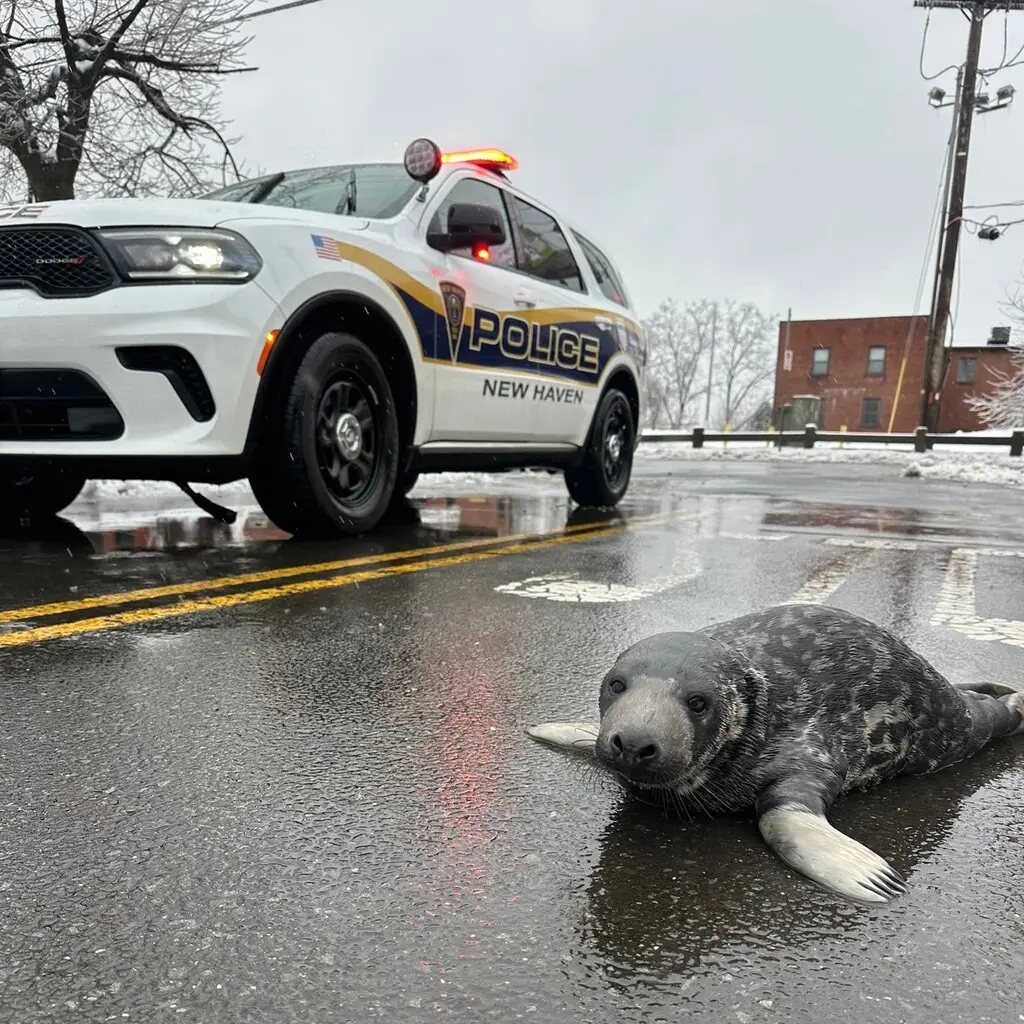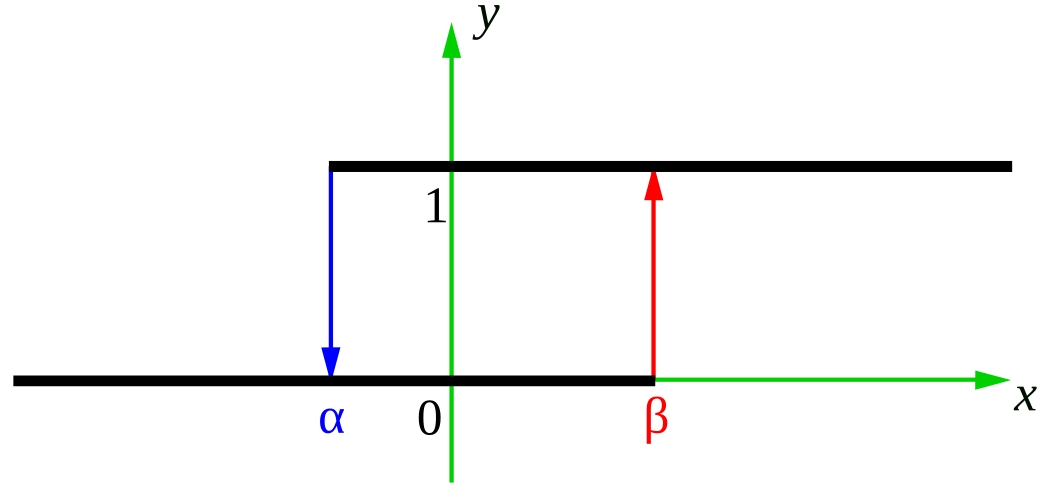
You can see strange things in the far north... like three suns! This photo was taken by Felipe Menzella in northern Sweden. The central bright spot is the sun, while the other two are 'parhelia' — also called 'sun dogs'.
A parhelion is a halo caused by the refraction of sunlight by ice crystals in the atmosphere. They show up around 22° to the left and right of the sun.
If you're a physicist, you'll instantly wonder: why to the left and right, but not top or bottom? In fact you can see light all around the Sun at a 22° angle, but it's much brighter to the left and right. Why?
The air here is full of ice crystals of a special kind: flat, thin hexagonal prisms of ice. As these crystals gently float down, they bend the light rays passing through them. And since they mainly lie flat, with their large hexagonal faces almost horizontal, the sunlight is refracted horizontally. Thus, the parhelia are seen mainly to the left and right of the sun!
But some of these ice crystals wobble as they fall, so we get a bit of light all around the sun.
I got this picture from NASA:

Supposedly this was taken in Eastern Manitoba on December 29th in 2017. For even more, check out my December 1st, 2013 diary entry.
February 17, 2025

This baby seal was found wandering around New Haven, Connecticut, about half a mile from the nearest water.
“It was looking for clam pizza,” said Officer Christian Bruckhart, a spokesman for the New Haven Police Department.
It's a baby gray seal — of a species commonly found in coastal waters throughout the North Atlantic Ocean. The pups come ashore to catch sun and rest on sand or rocks, but they can end up stranded far from water.
The good news is that this one was rescued by volunteers from the Mystic Aquarium’s animal rescue unit — in a town made famous by the Julia Roberts movie “Mystic Pizza.” For now it's getting a diet of fish formula to fatten him up. Later it will be given whole fish tossed into a pool to help it adjust to natural feeding.
February 18, 2025
What's a 'frustrated hysteron'? No, it's not someone on Mastodon who wishes it were more like Twitter.
'Hysteresis' is when a system's state depends not just on its surroundings now, but on the history of its surroundings. Sometimes a system like this is made of many tiny pieces called 'hysterons', each of which acts like a switch. Whether a switch is on or off depends on what you did to it in the past, so it's a great example of hysteresis.
If you put a chunk of iron in a strong magnetic field, and then turn off the magnetic field, it may get magnetized with its north pole pointing up. If you then put it in a strong magnetic field pointing the other way and turn off the field, it'll get magnetized with its north pole pointing down. So the current state of the magnet depends not only on its current environment, but on the past! That's hysteresis.
But if you look very closely, the iron is made of tiny bits called 'domains', which each have a uniform magnetization, and which act like little switches. These are examples of hysterons.
In iron, flipping one of these little switches makes it more likely that others will flip the same way. But in some other systems, flipping one system reduces the chance that others will get flipped. Then you have 'frustrated hysterons'.
Nathan Keim explains:
A good example of frustration is a bendy straw, which has a series of little bellows that can be collapsed or popped open. If you pull on the ends of the straw a tiny amount and stop, one will pop open, and it being open means that the others do not. The change in one relieves the stress in the system.Keim and others at Penn State have a new paper on how much a system can remember of its past:
Chloe W. Lindeman, Travis R. Jalowiec and Nathan C. Keim, Generalizing multiple memories from a single drive: the hysteron latch.
The single-dial combination lock is a mechanism for storing multiple values from a single input. By alternating between clockwise and counterclockwise rotation, the operator stores the combination values as a series of turning points. Each new turning point must be nested within the previous two, so that the lock verifies not only the values but their exact sequence. Information about the stored values can be recovered by observing the resistance to further rotation. Finally, erasure can be achieved with a large twist of the dial. Every operation is accomplished with a single control. This elegant idea was known by 1909, but it was rediscovered decades later as return-point memory: a general principle for systems of hysteretic elements driven by a field that alternately increases and decreases. Applications have ranged from ferromagnets to rocks, and more recently, memories of deformation in amorphous solids, crumpled sheets, and designed metamaterials that feature origami folds or buckling beams.
But the idea of hysterons goes back to the Preisach model of hysteresis, which models a magnet as a bunch of little switches, each of which works like the picture below. If you turn up the external magnetic field \(x\) to the value β or higher, the switch pops up. If you turn the external magnetic down to α or lower, the switch pops down.

Simple! But when you get a bunch of these switches together and let them interact, more interesting things can happen: we can get the familiar hysterisis curves we see in magnetic materials like iron.

In fact I find it hard to even think about science. I spend more time than usual thinking about politics.
For some years now I've been going around telling friends that we need a 'New Enlightenment'. It would aim at a reboot of civilization, based on sounder principles, which picks up where the so-called Age of Enlightenment left off. It would have a theoretical wing: completely rethinking politics and the economy in a way that takes the biosphere and the patterns of human behavior into account. And it would have a practical wing: fighting for freedom and justice against the authoritarians and billionaires.
Of course I know this sounds hopeless. The first enlightenment probably did too! But they had the advantage of communicating by letters, not in a public forum where some 'reply guy' instantly undercuts any idealism, and even well-meaning people pull each idea in a dozen divergent directions. So the New Enlightenment, if it happens, will have to be a bit careful about communication.
Next I'm going to digress into something very different.
I don’t especially like the term ‘New Enlightenment’. First, I think there was something too 'light' about the first one. It seems to have ignored the dark irrational side of human behavior, which came roaring back in the Romantic era, and later Nazism. Second, I don't even like these light/dark metaphors.
So I was surprised when a friend I'd never discussed these ideas with asked if I knew about the 'Dark Enlightenment'.
If you read about the Dark Enlightenment, you see it's also called 'neoreactionism' or 'NRx'. It was first pushed by a guy named Curtis Yarvin. Paraphrasing part of the Wikipedia article:
Yarvin's theories were elaborated and expanded by philosopher Nick Land, who first coined the term Dark Enlightenment in his essay of the same name.This Dark Enlightenment crap is pretty much exactly the opposite of what I'm hoping for. But if Trump, or his backers like Thiel, have any long-term game plan, maybe this is it. Authoritarian city-states? And maybe some large oppressive empires like Putin's Russia and Xi's China, for people who can't get into a city-state?In 2021, Yarvin appeared on Fox News' Tucker Carlson Today, where he discussed the United States' withdrawal from Afghanistan and his concept of the "Cathedral", which he claims to be the current aggregation of political power and influential institutions that is controlling the country.
Several prominent Silicon Valley investors and Republican politicians have expressed their influence from the philosophy, with venture capitalist Peter Thiel describing Yarvin as his "most important connection". Steve Bannon has read and admired his work, and there have been allegations that he has communicated with Yarvin which Yarvin has denied. JD Vance has cited Yarvin as an influence. Michael Anton, the State Department Director of Policy Planning during Trump's second presidency, has also discussed Yarvin's ideas. In January 2025, Yarvin attended a Trump inaugural gala in Washington; Politico reported he was "an informal guest of honor" due to his "outsize influence over the Trumpian right."
Land drew inspiration from libertarians such as Peter Thiel, particularly Thiel's claim that "I no longer believe that freedom and democracy are compatible". The Dark Enlightenment has been described by journalists and commentators as alt-right and neo-fascist.
Andy Beckett stated that "NRx" supporters "believe in the replacement of modern nation-states, democracy and government bureaucracies by authoritarian city states."
Wikipedia writes:
Yarvin in "A Formalist Manifesto" advocates for a form of neocameralism in which small, authoritarian "gov-corps" coexist and compete with each other, an idea anticipated by Hans Herman-Hoppe. He claims freedom under the system would be guaranteed by the ability to "vote with your feet", whereby residents could leave for another gov-corp if they felt it would provide a higher quality of life, thus forcing competition. Nick Land reiterates this with the political idea "No Voice, Free Exit", taken from Albert Hirschman's ideas of voice being democratic and exit being departure to another society:But we've already tried this idea. Historically, authoritarian city-states haven't always make it easy for people to enter or leave. Remember, Bach was jailed by the Duke of Saxe-Weimar for trying to leave town for a different job. That was typical in his day."If gov-corp doesn’t deliver acceptable value for its taxes (sovereign rent), [citizens] can notify its customer service function, and if necessary take their custom elsewhere. Gov-corp would concentrate upon running an efficient, attractive, vital, clean, and secure country, of a kind that is able to draw customers."

Watch the oligarchs move into their new roles. Jeff Bezos started out selling books. Now he's a multi-billionaire. He bought one of the best newspapers in the US: the Washington Post. But Trump publicly threatened his business, and Bezos is willing to suck up to Trump to stay out of trouble. So now he has decreed that the opinion section of the Post can only publish opinions in support of "free markets" and "personal liberties"... not against Trump.
But he's not really in favor of free markets: Amazon is a monopoly and exploits that power to the hilt.
And he's not really in favor of personal liberties: for example, Amazon forced their drivers to urinate in bottles and defecate in bags.
Bezos' notion of personal liberty is "freedom for me to be an oligarch... accountable only to the authoritarian boss." He acted liberal only when it didn't hurt his bottom line.
We cancelled our Washington Post subscription today.